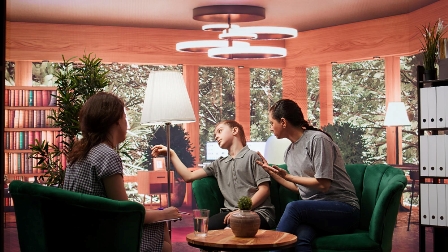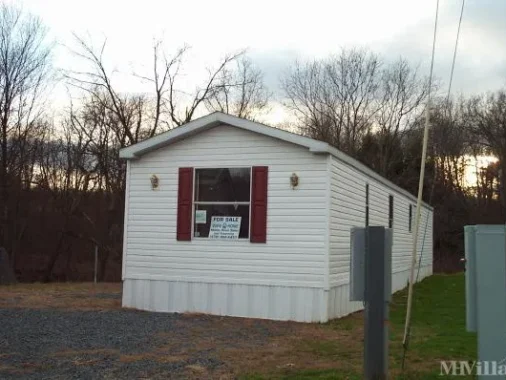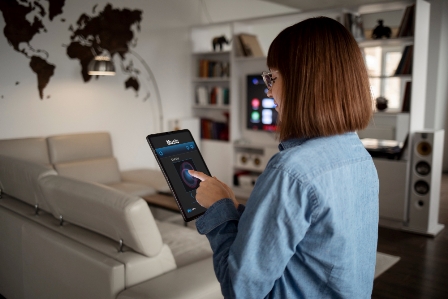If you’ve been thinking about upgrading your home, there’s no better time to consider adding some smart tech into the mix. Whether you’re looking to cut down on energy bills, make life a little easier, or boost your home’s security, smart home improvements can deliver real, everyday benefits. The trick is knowing which upgrades are actually worth it—and how to get started without feeling overwhelmed.
Let’s walk through some practical, proven smart home tips that can work for just about any homeowner.
Why Smart Upgrades Are More Than Just Gadgets
When people hear “smart home,” they often imagine futuristic gadgets or expensive setups. But smart home improvements today are more about function than flash. According to recent data from Statista, more than 60 million U.S. homes are now using smart devices, and that number continues to grow.
Here’s why homeowners are making the switch:
- Save money on utilities by automating heating, lighting, and more.
- Increase home security with remote monitoring and alerts.
- Raise your property value, especially with modern buyers.
- Enjoy everyday convenience, from voice commands to app controls.
- Monitor and control your home remotely, whether you’re at work or on vacation.
Choose a Smart Home Platform First
Before buying a bunch of devices, take a step back and think about how they’ll work together. Most smart home devices are designed to work within a certain ecosystem, like Google Home, Amazon Alexa, or Apple HomeKit.
Tips for getting started:
- Stick to one ecosystem for better compatibility.
- Use a reliable Wi-Fi network or consider a mesh system for better coverage.
- Install the right app(s) to manage everything from your phone.
Example: If you’re an Apple user, HomeKit-compatible devices tend to offer smoother integration and better privacy settings out of the box.
Make Energy Efficiency a Top Priority
Smart devices can help you cut down on energy use and lower your utility bills—without sacrificing comfort.
Here are some upgrades worth considering:
- Smart thermostats like Nest or Ecobee can learn your schedule and adjust heating or cooling automatically.
- Smart light bulbs (like Philips Hue) let you dim, change color, or turn off lights remotely—or based on motion.
- Smart plugs and outlets allow you to cut power to appliances when they’re not in use.
Real-world story: A homeowner in Oregon swapped out their standard thermostat for a smart one and started saving nearly $15 a month on heating and cooling costs.
Strengthen Your Home’s Security the Smart Way
One of the top reasons people invest in smart home tech is to feel safer. With just a few key upgrades, you can keep an eye on your home from anywhere.
Some popular choices:
- Video doorbells like Ring or Arlo show you who’s at your door, even when you’re not home.
- Smart locks let you unlock your door with your phone—or grant temporary access to guests or delivery drivers.
- Security cameras with motion alerts and cloud backups give you 24/7 visibility.
- Sensors for windows and doors alert you to any unexpected entry.
Pro Tip: Some home insurance companies even offer discounts if you install verified security systems.
Add Automation to Daily Routines
Smart homes are all about making life easier—and automation is where the magic happens.
You can set up routines so your home does things automatically, like:
- Turning on lights when someone walks into a room.
- Playing music when you arrive home.
- Starting your coffee maker when your morning alarm goes off.
Many devices support IFTTT (If This, Then That) rules, so you can get creative. Want the blinds to close when the sun sets? You can set that up in a few taps.
The Kitchen: A Smart Upgrade Hotspot
The kitchen might not be the first place that comes to mind when you think of tech, but it’s actually full of opportunities for smart upgrades.
Some helpful ideas:
- Smart fridges can track what’s inside and even help you build grocery lists.
- Smart ovens and stovetops let you preheat or monitor cooking from your phone.
- Faucets with voice control can dispense exact amounts of water—perfect for cooking or baking.
- Smart cooking devices, like app-connected pressure cookers, make dinner easier.
If you’re new to smart kitchen tech, start small. Even something like a Wi-Fi-connected coffee machine can make your morning routine smoother.
Don’t Skip the Bathroom
Yes, even your bathroom can benefit from smart home upgrades. These changes might be subtle, but they add a serious touch of comfort and luxury.
Upgrades to consider:
- Smart mirrors that show the weather, calendar, and even play music.
- Touchless faucets help improve hygiene and conserve water.
- Heated toilet seats or smart bidets offer a more comfortable experience.
- Leak detectors near your toilet or sink can help prevent costly water damage.
These features are especially helpful for elderly family members or anyone with mobility issues.
Improve Your Indoor Air Quality
Clean air is something we don’t always think about—until it becomes a problem. Smart devices can help keep your air cleaner and more comfortable year-round.
Helpful additions:
- Smart air purifiers that adjust automatically based on air quality.
- Humidity sensors to prevent mold and keep comfort levels steady.
- App-controlled fans and vents that help regulate temperature and airflow by room.
Cleaner air can mean fewer allergy symptoms and better sleep, especially during peak allergy seasons.
My Opinion: Start Small and Build As You Go
As someone who’s been slowly upgrading their own home, here’s my honest take: you don’t need to do it all at once. Start with a few basics that actually solve problems—like a thermostat that cuts down your energy bill or a camera that makes you feel safer.
Once you’ve got the hang of it, adding more devices becomes easier. And by choosing one ecosystem from the beginning, everything works together more smoothly.
Most importantly, your smart home should feel like a home first—just a more helpful one.
Keep Your Setup Secure and Updated
Smart tech makes life easier, but it’s still technology. Like your phone or computer, it needs regular care.
Tips to maintain your smart home:
- Keep firmware and apps up to date to fix bugs and security gaps.
- Use strong passwords, and enable two-factor authentication when possible.
- Check for battery levels on cameras, sensors, or remotes every few months.
- Back up automation settings if your system allows it.
Taking a little time to maintain your devices can save a lot of headaches later.
Final Thoughts
Smart home improvements aren’t just for tech lovers—they’re for anyone who wants a home that’s safer, more comfortable, and more efficient. Whether you’re looking to automate your lights, improve security, or save money on utilities, there’s a smart solution out there that fits your lifestyle.
Take it one step at a time, and before you know it, your home will be smarter—and your life a bit simpler.
FAQs
It depends on how much you want to automate. You can start with a few smart plugs and lights for under $200, or go all-in with whole-home systems that cost several thousand dollars.
Yes. Real estate experts, like those at Coldwell Banker, say smart features—especially security and energy efficiency—are increasingly attractive to buyers.
Not usually. Many smart devices are designed for DIY setup. Thermostats and cameras might require a little wiring, but most products come with clear instructions or apps that walk you through installation.





